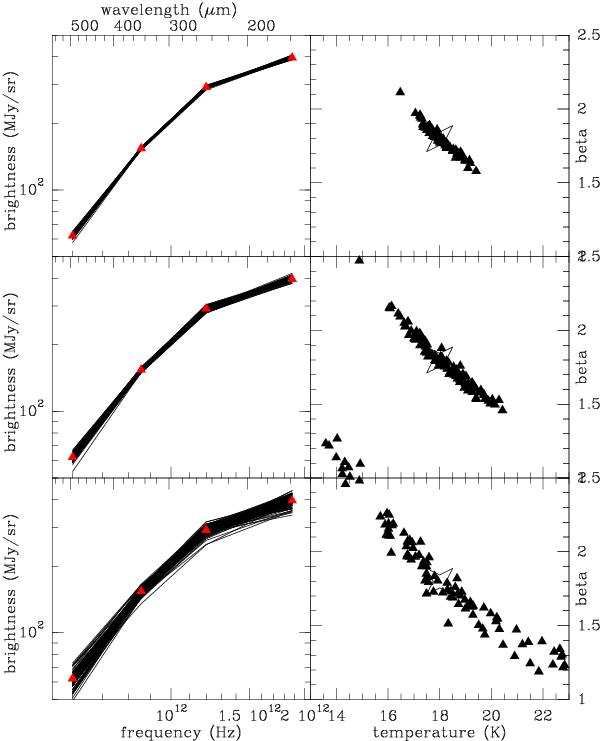Fig. 1

Illustration of the β − T degeneracy: the panels on the left-hand side show fits to the 4 data points to which noise has been added, and the right column shows the values of β and T. The large triangles on the left show the original data points (before adding noise), which follow a modified black-body law with β = 1.8 and T = 18, typical values for normal spiral galaxies. The large open stars show this position in the right-hand column. From bottom to top, the noise added follows a Gaussian distribution with standard deviation of 5% (bottom panels), 2% (middle panels) and 1% (top panels). Despite this very low noise level, the scatter in β and T is significant and correlated. An enlargement of the spectral coverage would help reduce the degeneracy if no other processes such as emission from small or spinning dust grains play a role within the extended wavelength range.
Current usage metrics show cumulative count of Article Views (full-text article views including HTML views, PDF and ePub downloads, according to the available data) and Abstracts Views on Vision4Press platform.
Data correspond to usage on the plateform after 2015. The current usage metrics is available 48-96 hours after online publication and is updated daily on week days.
Initial download of the metrics may take a while.


